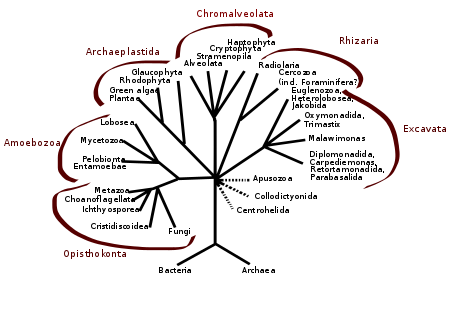Opisthokont
19.23
Diposting oleh zakky amarullah
 | |
| A human holding a mushroom; both are opisthokonts, unlike the trees behind them | |
| Scientific classification | |
|---|---|
| Domain: | Eukaryota |
Flagella
One common characteristic is that flagellate cells, such as most animal sperm and chytrid spores, propel themselves with a single posterior flagellum. This gives the groups its name.
In contrast, flagellate cells in other eukaryote groups propel themselves with one or more anterior flagella.
History
The close relationship between animals and fungi was suggested by Cavalier-Smith in 1987,[4] who used the informal name opisthokonta (the formal name has been used for the chytrids), and was confirmed by later genetic studies.[5]
Early phylogenies placed them near the plants and other groups that have mitochondria with flat cristae, but this character varies.
Cavalier-Smith and Stechmann[6] argue that the uniciliate eukaryotes such as opisthokonts and Amoebozoa, collectively called unikonts, split off from the other biciliate eukaryotes, called bikonts, shortly after they evolved.
Taxonomy

| |||||||||||||||||||||||||
| |||||||||||||||||||||||||
The great kingdoms and their stem groups.[7]
Posting Komentar